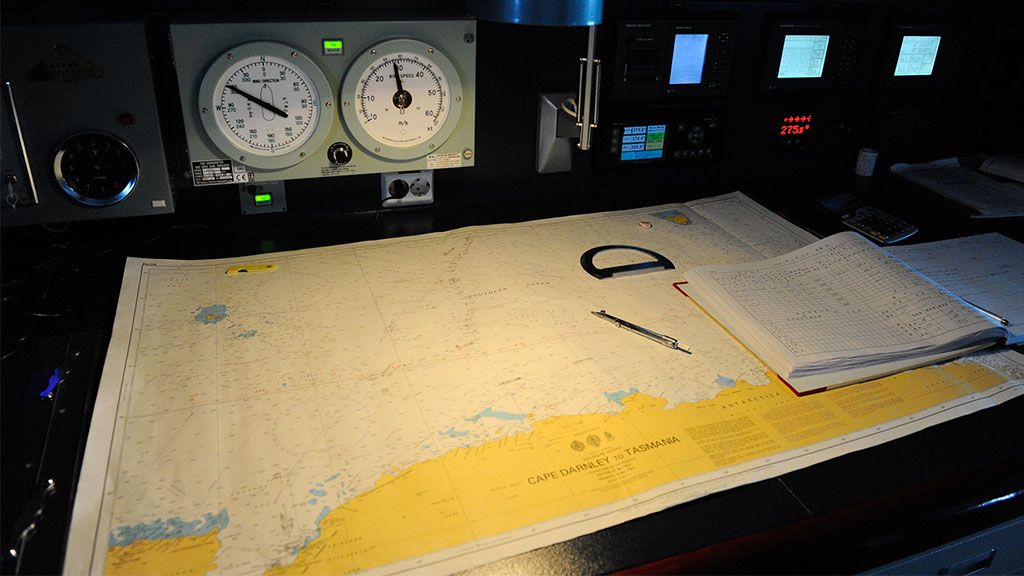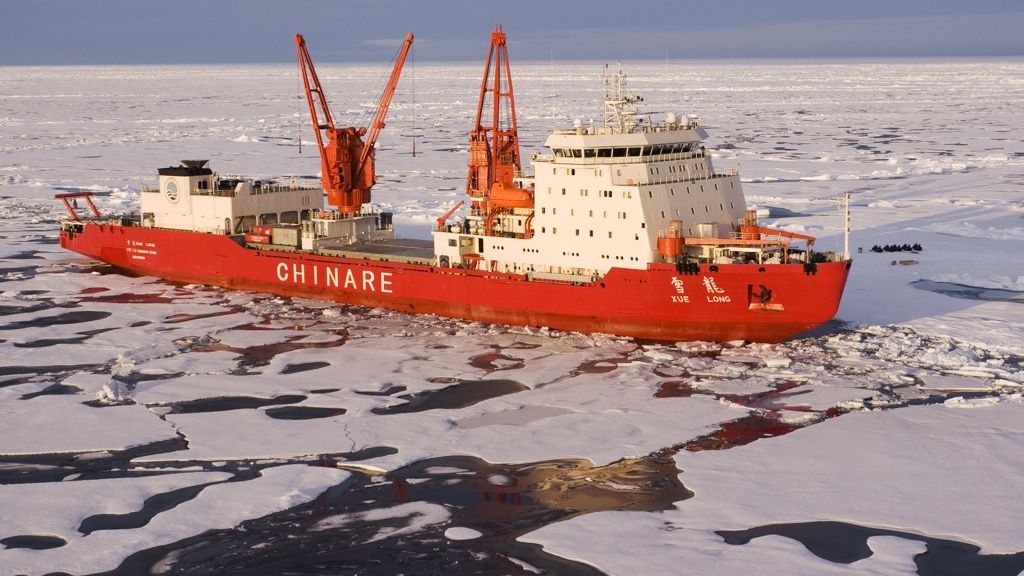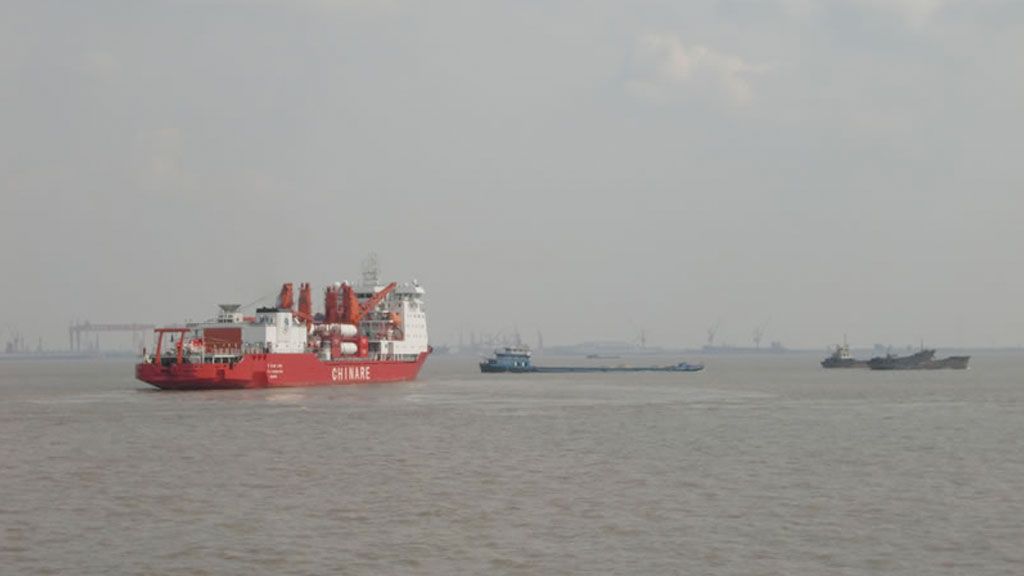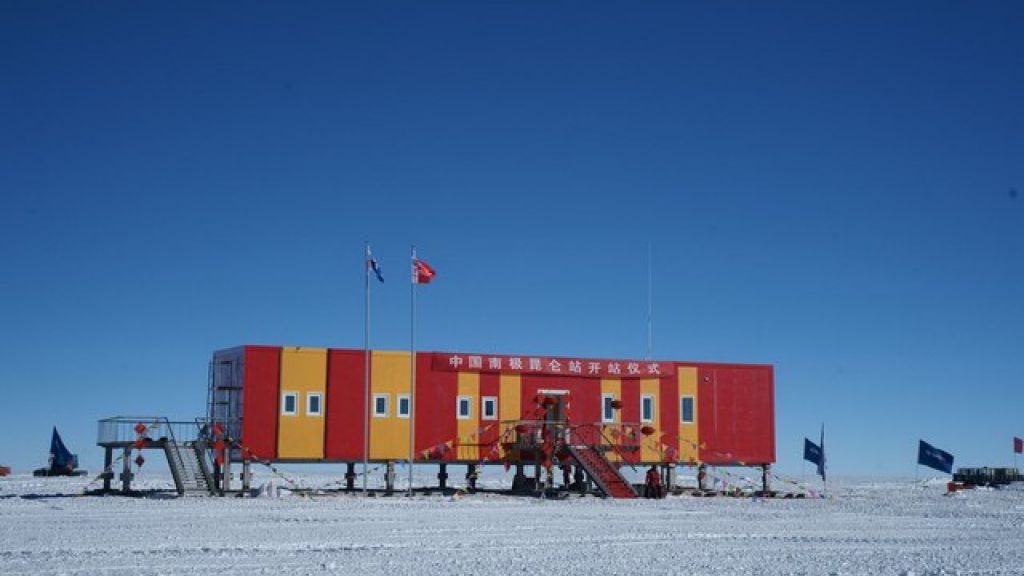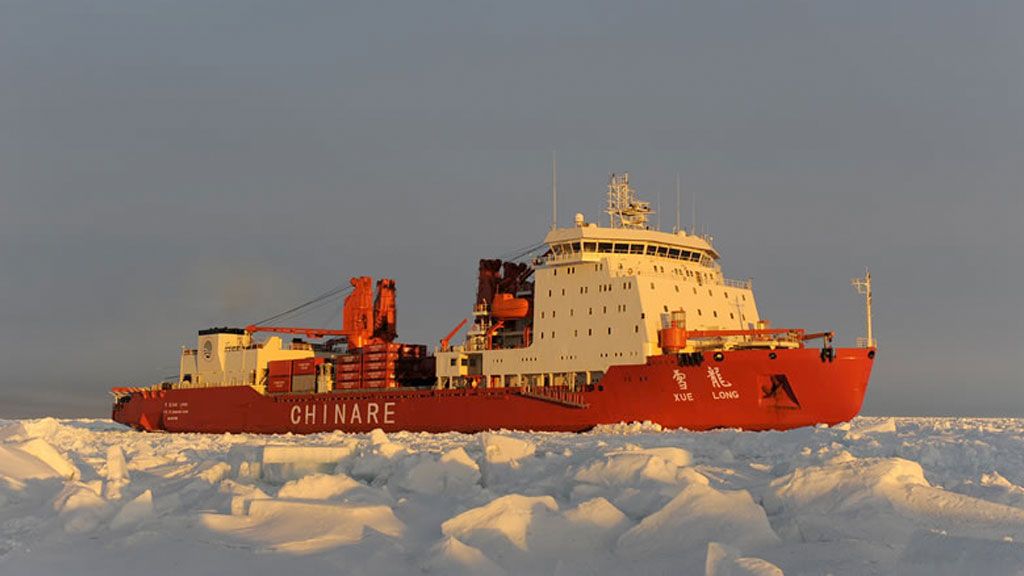Chinese Antarctic Expedition: crossing the Southern Ocean
Xue Long navigation room
© International Polar Foundation - Jean De Pomereu
Last night was party night on board the Xue Long. We played all sorts of games, the rules of which remain a mystery to me. But today at around 55 degrees south, soon after crossing the Antarctic Convergence (the imaginary line separating the warmer waters of the mid-latitudes with the colder Antarctic waters), we encountered our first fully-fledged Southern Ocean storm: A brutal, elemental whirlwind in which water, atmosphere, waves and wind all seemed to morph into one. It was the stuff of legends, which often figures into many accounts of sailing through these high latitudes.
This elemental force, and the fact that we haven't crossed a single other ship since leaving Freemantle, makes you realise just how big and open the Southern Ocean really is. One cannot help but feel threatened, yet also relieved that we are on board the Xue Long, a modern steel icebreaker, rather than on board Captain Cook's Resolution or any other wooden sailing ship used by the early explorers.
The reality is that it is no longer so much the ocean that is threatening us, but rather we who are threatening its delicate balance through our industrial and other fossil fuel dependent activities both here and half a world away.
If the rainforests are to be described as the lungs of the Earth (only in reverse: absorbing carbon dioxide and releasing oxygen in return), then the Southern Ocean and its Antarctic Circumpolar Current (ACC) might be described as one of its principle arteries. Feeding the global oceanic (thermohaline) circulation whilst also serving as one of Earth's principle carbon sinks (absorbers of CO2). In other words, it is crucial and relevant to the entire Earth system, and thus to our own lives for years and decades to come.
But today the Southern Ocean is in a state of flux, with some recent findings pointing to its diminishing ability to serve as a carbon sink because of the strengthening of the westerly winds (which stir up the carbon dioxide-rich cold waters, which then release their carbon dioxide). This is a result of both global warming and the human-induced ozone hole. Indeed, some projections predict that even as the ozone hole recovers over time, the continued warming trend may lead to the Southern Ocean eventually reaching its maximum capacity for CO2 sequestration, thus becoming a net emitter of CO2 and adding to the global problem instead of helping reduce it.
The jury is still out on this medium to long-term trend, as it is on whether sea-ice extent around Antarctica is stable or decreasing (as is happening so dramatically in the Arctic). The freezing of the ocean surface around Antarctica every austral winter is the single largest annual natural phenomenon on Earth, effectively doubling the surface area of the continent as seen from space. As this happens, it releases a dense brine that plunges to the ocean depths, thrusting salty water to the sea floor and thereby pumping the engine of global oceanic circulation. Because of this linkage, any significant change in the average extent of sea ice will probably have direct repercussions on oceanic circulation worldwide, and thus on the climate of our more temperate regions.
But the fact remains that we do not have the long-term data necessary to have a firm grasp of how Antarctic sea ice functions, with some scientists suggesting that its extent might even have increased somewhat in recent years. And then there is the question of the extremely rich Southern Ocean marine life and biomass and its response to global change, and how changes in it would entail repercussions on the entire oceanic food chain and ecosystem.
Obtaining answers to these extremely complex yet pivotal questions remains a huge challenge for scientists researching this vast ecosystem, whether they are working onboard the Xue Long or the handful of other research ice breakers operating in the Southern Ocean. Only one thing seems certain: The storms will keep raging.
Soon after crossing the Antarctic Convergence...we encountered our first fully-fledged Southern Ocean storm.

